When perceived from the lens of history, music, and songs are counted among the fundamental expressions that are unique to humanity. And while rudimentary forms of music probably hark back to prehistoric times, the evolved (and thus more refined) nature of musical expressions and songs in history pertain to what experts characterize as ‘ancient music’.
This article does cover some of the specimens from such an era, including the world’s oldest known song and the world’s oldest known complete song. Other ‘oldest’ tags are used for variable parameters, like the world’s oldest known polyphonic music and the earliest surviving secular English song.
Contents
- The Oldest Known Song In The World –
- Epic of Gilgamesh –
- Oldest Known Complete Song –
- 1500-Year-Old Latin Songs Recreated For the First Time in a Millenium –
- Earliest Known Practical Example of Polyphonic Music –
- Oldest Known Secular Norse Song –
- Earliest Surviving Secular English Song –
- First Computer-Generated Song Ever Recorded (1951) –
The Oldest Known Song In The World –
Hurrian Song to Nikkal (circa 1450 – 1200 BC).
The northern Syrian settlement of Ugarit had been inhabited since at least the Neolithic age (6000 BC), while by the 15th century BC, it had turned into a strategic port city that had trade connections with the Hittite Empire, the Egyptian Empire, and even distant Cyprus.
Given such extensive trade networks, the city-state reached its zenith in the epoch between 1450 BC – 1200 BC; and its rise to glory could be surmised from varied archaeological remains that ranged from a grand palace, temples to even libraries (containing clay tablets) that were unique in such a period of history.
But beyond relics of the past, archaeologists (in the 1950s) were also able to discover something that had present-day context. We are talking about what turned out to be the oldest known piece of music ever found in the history of mankind – and it pertains to a 3,400-year-old hymn composed of cuneiform signs in the Hurrian language.
The musical compilation (found in the form of a musical notation system etched on clay tablets) is better known as the Hurrian Songs. These were probably played on contemporary lyres, while the most ‘complete’ of this musical series pertains to the Hurrian Song to Nikkal.
Nikkal was a goddess entity of Ugarit/Canaan (and later of Phoenicia), and she was worshiped as the safe keeper of orchards and gardens. Interestingly enough, experts have been able to recreate the melody of the Hurrian Song to Nikkal. Musician Michael Levy has a produced his lyre interpretation of the A Hurrian Cult Song from Ancient Ugarit, and the soulful version can be heard in the video above.
The midi keyboard version below offers a modern take on this ancient composition (oldest song), based on the interpretation produced by Anne Draffkorn Kilmer, professor of Assyriology at the University of California, back in 1972.
Epic of Gilgamesh –
Opening lines of the Mesopotamian Epic (circa 18th century BC).
In the previous entry, we talked about the oldest known song in the world, better known as the Hurrian Song to Nikkal, which was originally composed in the northern Syrian settlement of Ugarit almost 3,400 years ago. Well, this time around we are witness to yet another Mesopotamian cultural achievement in the form of the Epic of Gilgamesh – possibly the oldest known epic in the world and also the earliest surviving great work of literature.
Now the literary history of the titular character Gilgamesh comes down to us from five Sumerian poems, though the first iterations of the epic itself were possibly compiled in ‘Old Babylonian’ versions (circa 18th century BC).
Simply put, while the provenance of these literary works is based on Sumerian language and literature, the end product/s (as available to common people) of the epic were possibly composed in Babylonian and related Akkadian – languages that were different from Sumerian, based on their Semitic origins.
But since we are talking about origins, few ancient Mesopotamian bards and scholars might have still sung some of Gilgamesh’s heroic exploits in Sumerian. To that end, Canadian musician Peter Pringle has presented his version of the Epic of Gilgamesh in ancient Sumerian (above), with the video covering the opening lines of the epic poem. According to the musician –
Oldest Known Complete Song –
Song of Seikilos, from the Seikilos epitaph (circa 1st century AD).
From the historical perspective, many scholars believe that music played an integral role in the lives of ordinary ancient Greeks, given its role in most social occasions – ranging from religious rites, and funerals to the theater and public recitation of ballads and epic poetry. Both archaeological and literary pieces of evidence rather bolster such a theory that points to the crucial nature of music in ancient Greece.
In fact, the Greeks attributed the ‘creativity’ of musical compositions to divine entities, and as such etymologically the very word ‘music’ is derived from ‘Muses‘, the personifications of knowledge and art who were the nine daughters of Zeus and Mnemosyne. Interestingly, Mnemosyne herself was the personification of memory and was also one of the Titans, the children of Uranus the Sky and Gaia the Earth.
As for the historical side of affairs, scholars came across the world’s oldest (known) complete song – and this musical piece (in its entirety) was etched on the Seikilos epitaph. Judging by the ancient Greek characters on the inscription, the song is Hellenistic Ionic in origin, and the etching was probably made sometime in the 1st century AD.
The vocalized recreation presented above was made by the San Antonio Vocal Arts Ensemble (SAVAE). And in case one is interested, the lyrics roughly translated to English, excluding the musical notation, goes like this –
While you live, shine
have no grief at all
life exists only for a short while
and time demands its toll.
The discovery of the epitaph was made way back in 1883 by Sir W. M. Ramsay in Tralleis, a small town near Aydin (Turkey). The epitaph, according to some stories, was lost again, and finally reemerged after the Greco-Turkish War of 1919–1922, due to its rediscovery in Smyrna in 1923.
And interestingly, the region of Aydin has had a long tryst with human civilization in its flowering form, so much so that Aydin in itself translates to ‘lettered, educated, intellectual’. Consequently, the archaeological site in Tralleis boasts many cultural artifacts from human history, including theatrical masks that were symbolically arrayed alongside human burials.
Furthermore, when it came to the ancient Greek musical instruments, the musicians had a penchant for lyres (and kithara), aulos pipes and syrinx, and even the hydraulis – a setup that was the precursor to the modern organ.
And with the aid of the flurry of archaeological and literary pieces of evidence of vocal notations and musical ratios, combined with the identification of these instruments, researchers have been able to recreate precise renditions of ancient Greek music.
For example, Dr. David Creese, Head of Classics & Ancient History at the University of Newcastle, has devised the following reconstruction (SoundCloud link here) of a musical piece that was etched on the ‘Seikilos epitaph’ dating from 1st century AD –
1500-Year-Old Latin Songs Recreated For the First Time in a Millenium –
Excerpts from The Consolation of Philosophy by Boethius (circa 6th century AD).
“If there is a God, whence proceed so many evils? If there is no God, whence cometh any good?” – one of the oft-quoted Roman philosophers who was born four years after the Western Roman Empire ‘technically’ ceased to exist, Boethius or Anicius Manlius Severinus Boëthius (480 AD – 525 AD) held many offices, including that of a senator, consul, and magister officious.
In 2017, one of his lingering legacies in the form of an ancient song known as the ‘Songs of Consolation’ was recreated and performed for the first time in the last thousand years. The musical piece pertains to the poetic portions of Boethius’ magnum opus The Consolation of Philosophy, considered one of the most important and widely-read philosophical works of the Middle Ages.
In fact, from the historical perspective, the work’s eminence stemmed from its various translations by renowned personalities like King Alfred the Great, Chaucer, and even Elizabeth I. And since we brought up the scope of history, the medieval period also witnessed a plethora of Latin songs being composed in neumes, in the period between circa 9th century to 13th century.
Many of these musical pieces were not only derived from the works of late antiquity authors like Boethius but also from the works of classical ancient authors like Horace and Virgil.
Cambridge University’s Dr. Sam Barrett had to delve into one of these incredible historical journeys to identify and then recreate the ‘Songs of Consolation’. And while the statement may seem straightforward, the process was anything but, especially since medieval music was written on the basis of melodic outlines, as opposed to the modern-day recognition of what we know as notes.
In other words, the thousand-year musical compositions were more dependent on the oral traditions of contemporary musicians. As Barrett clarified –
Neumes indicate melodic direction and details of vocal delivery without specifying every pitch and this poses a major problem. The traces of lost song repertoires survive, but not the aural memory that once supported them. We know the contours of the melodies and many details about how they were sung, but not the precise pitches that made up the tunes.
In spite of such limitations, Barrett was able to compile and piece together around 80 percent of what can be technically known about the melodies for Boethius’ The Consolation of Philosophy. And while the project was painstaking, he was fortunately helped by Benjamin Bagby, the co-founder of Sequentia, a three-piece group of experienced performers who have formulated “their own working memory of medieval songs”.
With their expertise, the two researchers tried versions that combined both the theoretical and practical approaches (based on periodic instruments) and step-by-step resurrected a musical side to the poems of The Consolation of Philosophy.
Earliest Known Practical Example of Polyphonic Music –
Chant Dedicated to Saint Boniface (circa 10th century AD).
Research completed in 2014 has shed light on what had been termed the “earliest known practical example of polyphonic music”. Pertaining to an inscription found on a British Library manuscript in London, the piece of choral music was judged to be composed (written) for more than one part.
The scholars believe that this composition (comprising a short chant) dates back to the early 10th century (circa 900 AD), and was dedicated to Boniface, patron Saint of Germany. In essence, it predates what was previously thought to be the earliest polyphonic music, from an 11th-century collection called The Winchester Troper, by almost a hundred years.
The musical piece was discovered by Giovanni Varelli, a Ph.D. student from St John’s College who specializes in early musical notation. His initial analysis revealed that the music consisted of two complementary vocal parts.
The later assessment confirmed that the piece composed as a short antiphon (a sentence sung before or after a psalm) was accompanied by a secondary vocal arrangement. Interestingly enough, this type of composition goes against the contemporary convention – as mentioned in 10th-century musical treatises, thus suggesting that medieval composers were already beginning to experiment with their musical scopes at an intrinsic level. As Varelli said –
What’s interesting here is that we are looking at the birth of polyphonic music and we are not seeing what we expected. Typically, polyphonic music is seen as having developed from a set of fixed rules and almost mechanical practice.
This changes how we understand that development precisely because whoever wrote it was breaking those rules. It shows that music at this time was in a state of flux and development, the conventions were fewer rules to be followed than a starting point from which one might explore new compositional paths.
Technically labeled as an organum, this early type of polyphonic music didn’t immediately come into the historical limelight probably because of the ‘rudimentary’ musical notation used for the piece, which could be rather abstruse to modern readers and aficionados.
But as with a bevy of historical artifacts and discoveries, researchers are still not sure about the original composer of this earliest known practical example of polyphonic music. However, judging by the type of notation (probably Eastern Palaeo-Frankish), the origin of the music might have pertained to a monastic center in northwest Germany, possibly in proximity to Paderborn or Düsseldorf.
Oldest Known Secular Norse Song –
Drømde mig en drøm i nat (circa 13th century AD).
Codex Runicus, the medieval manuscript dating from circa 1300 AD, comprises around 202 pages composed of runic characters. Known for its content of the Scanian Law (Skånske lov) – the oldest preserved Nordic provincial law, the codex is also touted to be one of the very rare specimens that have its runic texts found on vellum (parchment made from calfskin).
And interestingly enough, as opposed to the Viking Age usage of runes, each of these ‘revivalist’ runes corresponds to the letters of the Latin Alphabet.
Now while a significant section of the Codex Runicus covers the Scanian Ecclesiastical Law (pertaining to Danish Skåneland), the manuscript also chronicles the reigns of early Danish monarchs and the oldest region along the Danish-Swedish border.
But most interestingly, the last page of the codex also contains what can be defined as the oldest known musical notations written in Scandinavia, with their non-rhythmic style on a four-line staff.
One such Norse song verse, more famously known in modern Denmark as the first two lines of the folk song Drømde mig en drøm i nat (‘I dreamt a dream last night’), is presented in the video above, performed under the tutelage of renowned Old Norse expert – the ‘Cowboy Professor’ Dr. Jackson Crawford. One can also listen to the short instrumentation of this old Norse song by clicking here.
Lyrics (Old Norse):
Drøymde mik ein draum i nótt
um silki ok ærlig pell,
um hægindi svá djupt ok mjott,
um rosemd með engan skell.
Ok i drauminom ek leit
sem gegnom ein groman glugg
þá helo feigo mennsko sveit,
hver sjon ol sin eiginn ugg.
Talit þeira otta jok
ok leysingar joko enn —
en oft er svar eit þyngra ok,
þó spurning at bera brenn.
Ek fekk sofa lika vel,
ek truða þat væri best —
at hvila mik á goðu þel´
ok gløyma svá folki flest´.
Friðinn, ef hann finzt, er hvar
ein firrest þann mennska skell,
fær veggja sik um, drøma þar
um silki ok ærlig pell.
Lyrics (English translation):
I dreamed a dream last night
of silk and fair furs,
of a pillow so deep and soft,
a peace with no disturbance.
And in the dream I saw
as though through a dirty window
the whole ill-fated human race,
a different fear upon each face.
The number of their worries grow
and with them the number of their solutions —
but the answer is often a heavier burden,
even when the question hurts to bear.
As I was able to sleep just as well,
I thought that would be best —
to rest myself here on fine fur,
and forget everyone else.
Peace, if it is to be found, is where
one is furthest from the human noise —
and walling oneself around, can have a dream
of silk and fine furs.
And in case you are interested, the famous folk song (partly derived from the oldest secular Norse song) is presented below. It was performed by the Danish singer Louise Fribo.
Earliest Surviving Secular English Song –
Mirie it is while sumer ilast (circa 1225 AD).
Shifting our focus to another Germanic language which still retains around 400 million native speakers, we have come across what might be the earliest surviving secular English song, dating from the first half of the 13th century (circa 1225 AD). Known as Mirie it is while sumer ilast (‘Merry it is while summer lasts’), the preservation of the song is quite fortuitous since it was composed on a paper that was kept inside an unrelated historical manuscript.
The manuscript in question here pertains to the Book of Psalms, originally written in Latin on parchment, dating from the latter half of the 12th century AD. However, after a few decades of its composition, an anonymous writer (probably not the original scribe) added a flyleaf – a blank page, at the beginning of the manuscript.
This particular page contained handwritten compositions of two French songs, along with a verse (in Middle English) of what is now considered the earliest surviving secular English song – Mirie it is while sumer ilast. This ‘rudimentary’ music has been recreated and performed on a medieval harp by Ian Pittaway, in the above video.
Translation to modern English –
Miri it is while sumer ilast with fugheles song, oc nu
neheth windes blast and weder strong. ei ei what this
niht is long. and ich with wel michel wrong, soregh and
murn and fast.
Merry it is while summer lasts with the song of birds;
but now draws near the wind’s blast and harsh weather.
Alas, Alas! How long this night is! And I, most unjustly,
sorrow and mourn and fast.
And in case, you prefer a more standardized version of the medieval English song, the following performance was conducted for the Melodious Melancholye album by the Ensemble Belladonna.
First Computer-Generated Song Ever Recorded (1951) –
Alan Turing, the man widely hailed as the father of modern computing, was also a brilliant music innovator, according to a team of researchers from New Zealand. As part of a project conducted in 2016, the scientists managed to recover what is most likely the first electronic song ever recorded. Dating back to 1951, computer-generated music was produced with the help of a giant contraption designed by the British mathematician and cryptanalyst.
As pointed out by the scientists, the device eventually paved the way for a variety of modern-day musical instruments, including synthesizers. Speaking about the man who is best known for decrypting the famous WWII Enigma code, Jack Copeland and Jason Long of the Christchurch-based University of Canterbury (UC), said:
Alan Turing’s pioneering work in the late 1940s on transforming the computer into a musical instrument has been largely overlooked.
The music was generated by one of BBC’s outside-broadcast units using the enormous machine built by Turing. The contraption, the scientists reveal, was housed in the Computing Machine Laboratory, located in Manchester in the northern part of England. In fact, the device was so big that it took up most of the building’s ground floor.
Opening with Britain’s national anthem “God Save the Queen”, the two-minute-long audio included portions of two other songs: “In the Mood” by Glenn Miller and “Baa Baa Black Sheep”. It was recorded onto a 12-inch (approx. 30.5 cm) acetate disc that was badly damaged, leaving the music distorted. The team added:
The frequencies in the recording were not accurate. The recording gave at best only a rough impression of how the computer sounded.
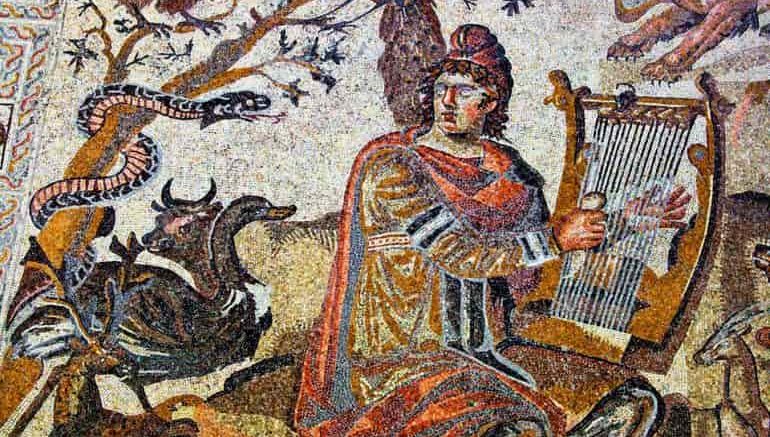
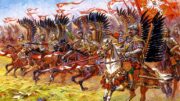
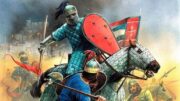
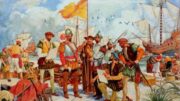
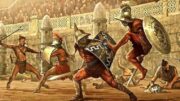
Be the first to comment on "8 Of The Oldest Known Songs, You Should Listen To"